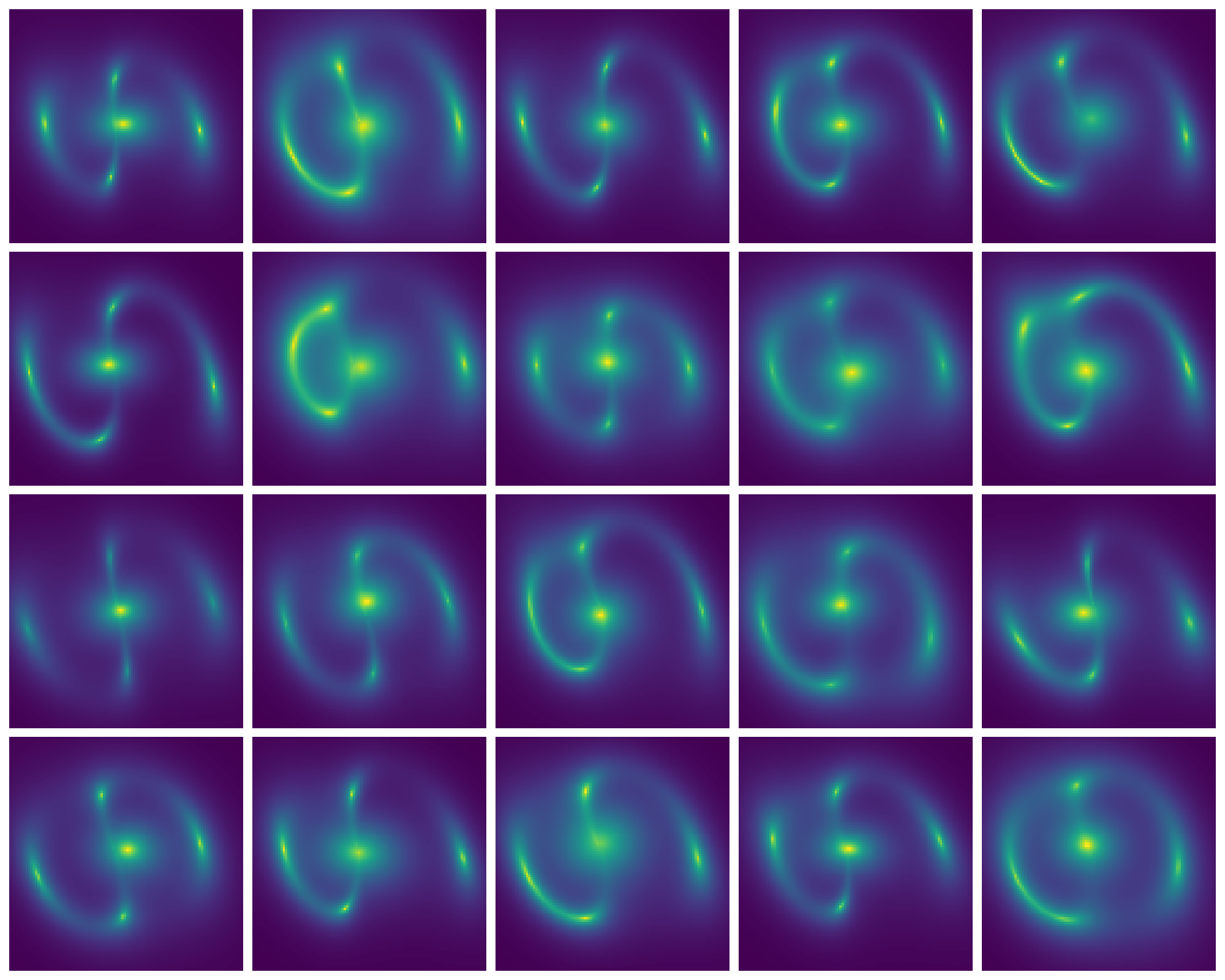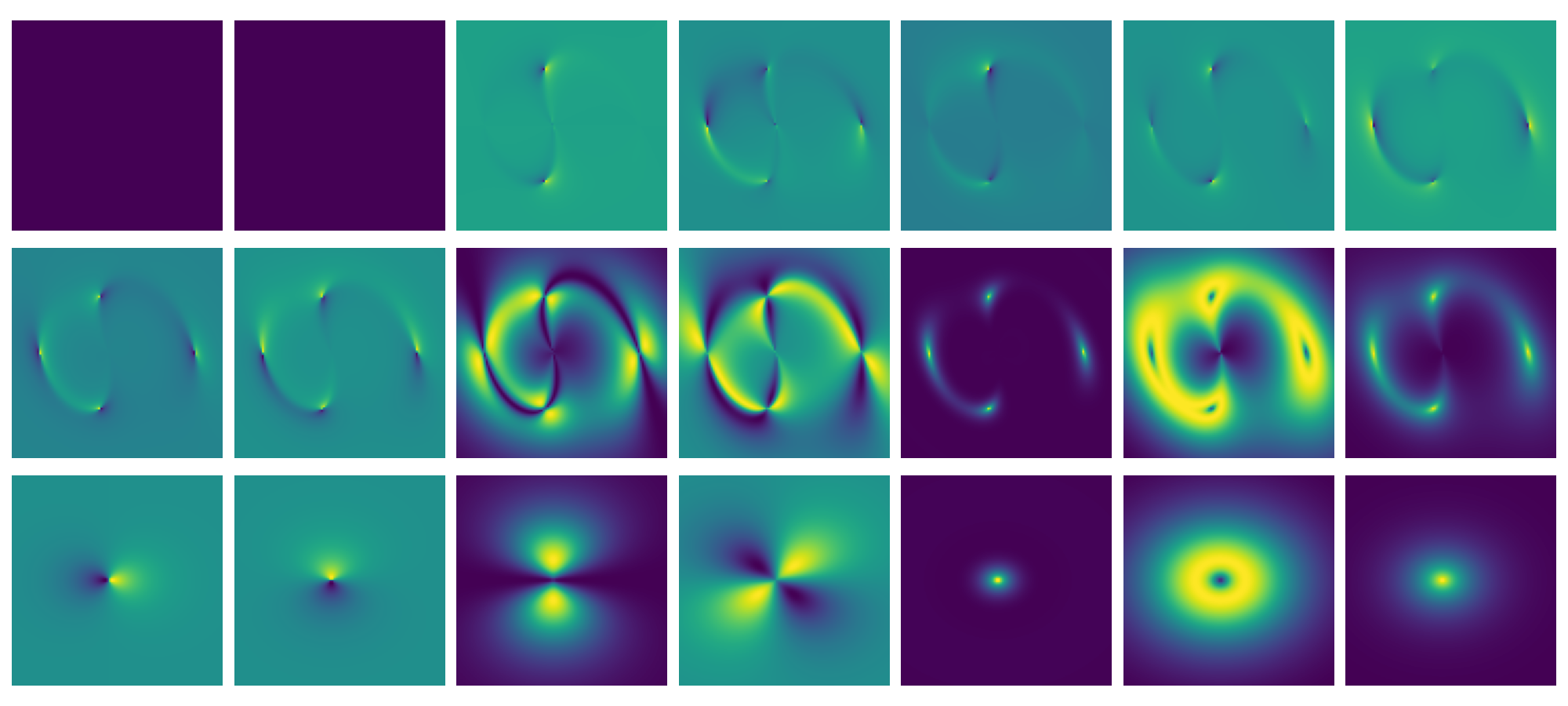
The lensing pipeline of the future: GPU-accelerated, automatically-differentiable, highly modular. Currently under heavy development: expect interface changes and some imprecise/untested calculations.
Simply install caustics from PyPI:
pip install causticsimport matplotlib.pyplot as plt
import caustics
import torch
cosmology = caustics.FlatLambdaCDM()
sie = caustics.SIE(cosmology=cosmology, name="lens")
src = caustics.Sersic(name="source")
lnslt = caustics.Sersic(name="lenslight")
x = torch.tensor([
# z_s z_l x0 y0 q phi b x0 y0 q phi n Re
1.5, 0.5, -0.2, 0.0, 0.4, 1.5708, 1.7, 0.0, 0.0, 0.5, -0.985, 1.3, 1.0,
# Ie x0 y0 q phi n Re Ie
5.0, -0.2, 0.0, 0.8, 0.0, 1., 1.0, 10.0
]) # fmt: skip
sim = caustics.LensSource(
lens=sie, source=src, lens_light=lnslt, pixelscale=0.05, pixels_x=100
)
plt.imshow(sim(x), origin="lower")
plt.axis("off")
plt.show()newx = x.repeat(20, 1)
newx += torch.normal(mean=0, std=0.1 * torch.ones_like(newx))
images = torch.vmap(sim)(newx)
fig, axarr = plt.subplots(4, 5, figsize=(20, 16))
for ax, im in zip(axarr.flatten(), images):
ax.imshow(im, origin="lower")
plt.show()J = torch.func.jacfwd(sim)(x)
# Plot the new images
fig, axarr = plt.subplots(3, 7, figsize=(20, 9))
for i, ax in enumerate(axarr.flatten()):
ax.imshow(J[..., i], origin="lower")
plt.show()Please see our documentation page for more detailed information.
We welcome contributions from collaborators and researchers interested in our work. If you have improvements, suggestions, or new findings to share, please submit an issue or pull request. Your contributions help advance our research and analysis efforts.
To get started with your development (or fork), click the "Open with GitHub Codespaces" button below to launch a fully configured development environment with all the necessary tools and extensions.
Instruction on how to contribute to this project can be found in the CONTRIBUTION.md
Some guidelines:
- Please use
isortandblackto format your code. - Use
CamelCasefor class names andsnake_casefor variable and method names. - Open up issues for bugs/missing features.
- Use pull requests for additions to the code.
- Write tests that can be run by
pytest.
Thanks to our contributors so far!





